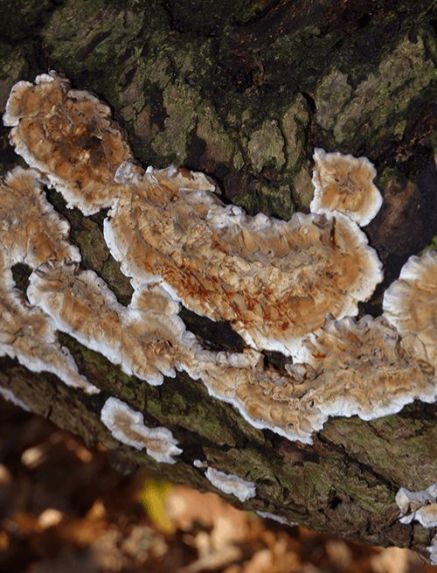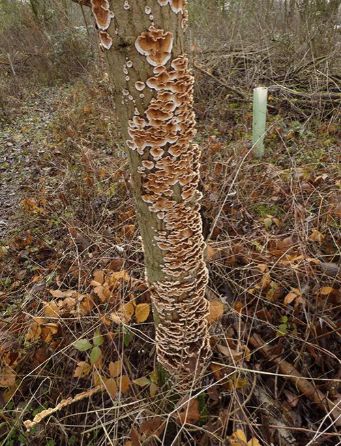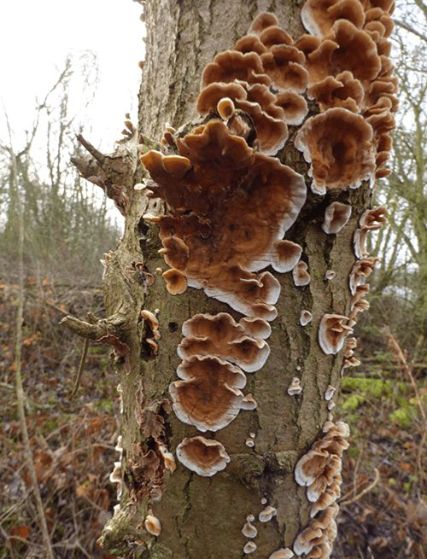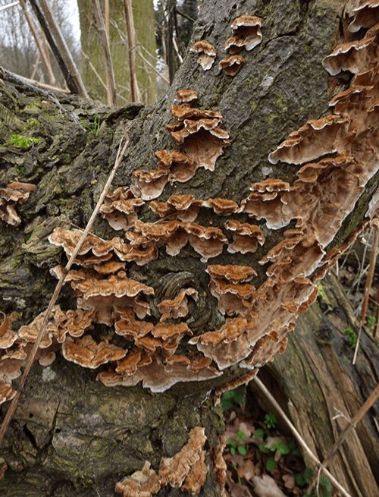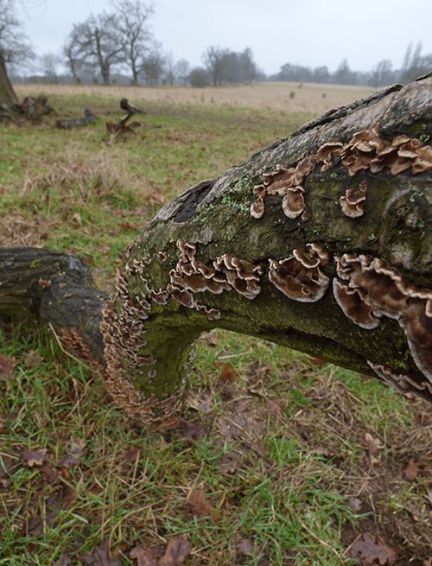Stereum gausapatum
(Fr.) Fr.
Common name
Oak curtain crust
Often found on
English oak.
Sometimes found on
Other oak species.
Location
Found on dead and dysfunctional areas of standing trees and on fallen tree parts.
Description
Annual. Resupinate or bracket -like. Individually very thin. Resupinate form rimmed white with a yellow-orange centre that sometimes exudes red liquid. When damaged with a blade the fungus bruises red over the blade’s track. Brackets form a downy upper surface that is banded with ochreous browns and golds. Often overlapping and abundant.
Confused with
Stereum hirsutum (does not damage red); Stereum rugosum (wider host range); Stereum subtomentosum (rim underside damages yellow).
Significance
Attributed to a selective white rot of the wood. Considered saprotrophic though may facilitate in the death of shaded-out branches with low vitality. Indicative of dead and dysfunctional areas, therefore. Deadwood within crowns of oaks colonised by this fungus with targets beneath should be removed. Indicative of (sometimes localised) dysfunction when found on standing stems.
 Fr. AP.jpg)
 Fr. B.jpg)
 Fr. C.jpg)
 Fr. D.jpg)
 Fr. E.jpg)
